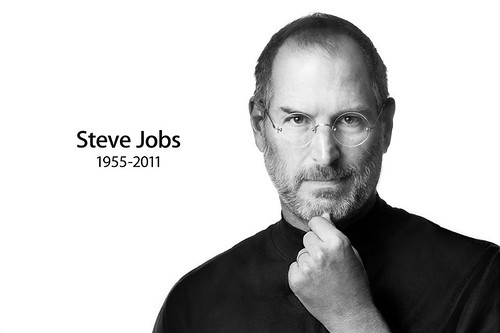The App Store created a new industry overnight.
應用程序商店在一夜之間創造了一個新的產業。
In dorm rooms and garages and at major media companies, entrepreneurs invented new apps.
創業者們在宿舍、車庫,以及主流媒體企業開發出了許多新的應用程序。
John Doerr's venture capital firm created an iFund of $200 million to offer equity financing for the best ideas.
約翰·多爾的風投公司成立了iFund基金,提供2億美元為最好的創意進行股權融資。
Magazines and newspapers that had been giving away their content for free saw one last chance
雜志和報紙看到了最后的希望,他們此前一直免費發布電子內容,
to put the genie of that dubious business model back into the bottle.
也許能憑借應用程序對電子內容進行收費,就像將精靈收回了魔瓶一樣。
Innovative publishers created new magazines, books, and learning materials just for the iPad.
富于創新的出版商專門為iPad創造出新的雜志、書刊和學習材料。
For example, the high-end publishing house Callaway, which had produced books ranging from Madonna's Sex to Miss Spider's Tea Party,
例如,曾出版過麥當娜的《性》以及《蜘蛛小姐的茶會》等作品的高端出版社卡拉威
decided to "burn the boats" and give up print altogether to focus on publishing books as interactive apps.
決定破釜沉舟,完全放棄印刷業,而專注于利用交互式應用程序進行書籍出版。
By June 2011 Apple had paid out $2.5 billion to app developers.
截至2011年6月,蘋果公司已向應用程序開發者支付了25億美元。

The iPad and other app-based digital devices heralded a fundamental shift in the digital world.
iPad和其他基于應用程序的數碼產品預示著數碼世界的根本性轉變。
Back in the 1980s, going online usually meant dialing into a service like AOL, CompuServe, or Prodigy that charged fees for access to a carefully curated walled garden
20世紀80年代,上網通常需要撥號進入一個服務商網絡,如美國在線、CompuServe公司或Prodigy公司,這些服務商會提供一個圍墻網絡“花園”,
filled with content plus some exit gates that allowed braver users access to the Internet at large.
里面都是服務商精心挑選組織的內容,同時這些“花園”會有一些出口,更為大膽的用戶可以通過這些出口訪問整個網絡。
The second phase, beginning in the early 1990s,
第二階段始于20世紀90年代初,
was the advent of browsers that allowed everyone to freely surf the Internet using the hypertext transfer protocols of the World Wide Web,
瀏覽器開始興起,所有人都能利用萬維網超文本傳輸協議,通過瀏覽器瀏覽互聯網上的數十億個網站。
which linked billions of sites. Search engines arose so that people could easily find the websites they wanted.
雅虎和谷歌等捜索引擎的崛起,使用戶可以輕易地找到自己想要的網站。
The release of the iPad portended a new model. Apps resembled the walled gardens of old.
而iPad的發布預示著一種新的模式。應用程序就像老式的圍墻花園。
The creators could charge fees and offer more functions to the users who downloaded them.
創作者能夠為下載它們的用戶提供更多功能。
But the rise of apps also meant that the openness and linked nature of the web were sacrificed.
但是應用程序的興起也意味著犧牲網絡的開放性和連接性。
Apps were not as easily linked or searchable.
應用程序之間不易建立連接,也不易搜索。
Because the iPad allowed the use of both apps and web browsing, it was not at war with the web model.
由于iPad可以同時使用應用程序和網絡瀏覽,因此它同網絡模式并無競爭。
But it did offer an alternative, for both the consumers and the creators of content.
但是,它確實為內容創造者和消費者提供了一種替代方案。



